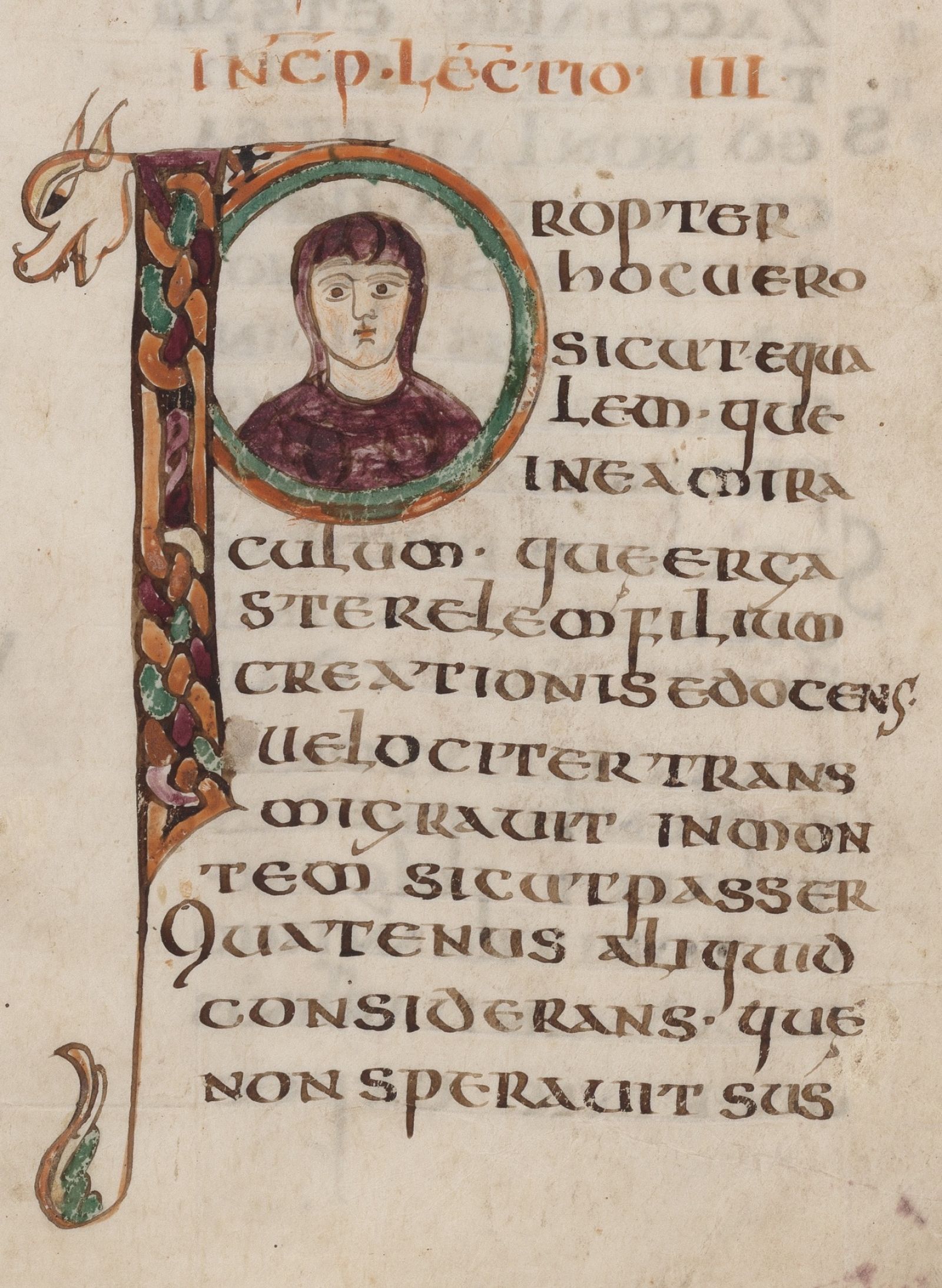Vortrag
Francesca Dell'Acqua Boyvadaoğlu
Beata humilitas: an eighth-century ‘textual icon’?

The Virgin Mary, Rome, BAV, Vat.lat.3836, f. 64r, detail.
In my latest monograph Iconophilia (2020), I have defined ‘textual icons’ mental images which were translated into vivid images made of words and which eventually impacted the imagining of the Incarnate God and his mother, the Virgin Mary. In particular, I explored the writings of Ambrose Autpert (d.784), a monk from Provence active at the central Italian monastery of San Vincenzo al Volturno. In the opinion of notable art historians, including Pietro Toesca and Hans Belting, his writings have been of great consequence in the developments of visual imagery in the medieval period, inspiring a range of iconographies of Mary, Christ, and the Revelation. The ‘textual icon’ of Mary as beata humilitas ("blessed humility"), which Autpert crafted, had roots in the monastic normative tradition. Inspired by John Cassian (d.c.435), who spent most of his life monastic life in Palestine and Egypt, Benedict of Nursia (d.548) recommended his monks to observe of a rule of conduct informed by humilitas, the twelve degrees of which he visualised in the twelve rungs of a ladder leading to spiritual perfection. The image of the celestial ladder was not uncommon in the eastern and western Christian exegetical tradition, although was usually applied to Christ, the Cross, the concordance of Old and New Testament, and to Jacob’s dream (Genesis 28). However, the most famous Greek Marian hymn, the Akathistos, dating to the fifth or sixth century, celebrated Mary as a ‘celestial ladder by which God descended’ (III, 10–11). Between the late seventh and the early eighth centuries, the Damascus-born preacher and theologian Andrew of Crete used the image of the ladder to visualise Mary’s connective role between heaven and earth. Demonstrably relying on the Greek tradition, Autpert depicted the role of Mary through the image of scala caelestis or heavenly ladder, noting that on the grounds of her humility in accepting God’s will, she became a living ladder through which God descended to earth, and through which the faithful can climb up to heaven. He is also the first author to speak of the Virgin Mary as beata humilitas, hence crafting an image of the Virgin as embodiment of humility. To this image not only Mary’s obedience is attached, but also her intentional cooperation in God’s plan of salvation, the reward of which is a place in heaven next to her Son and Bridegroom. Hence, Mary becomes the virtuous exemplar for the faithful as they try to ascend the ladder to heaven. The late medieval theme of the Madonna dell’Umiltà has been recently seen as way of promoting a model of motherhood and conduct which harnessed the expression of women’s agency beyond their household. Instead, the early medieval instance which emerged in Autpert’s mind was meant to reassure all believers, across genders and social classes, that in practising humility and lowering themselves in the service of others – like the Virgin Mary, the ancilla Domini – one could climb the steps of the heavenly ladder, aspiring to spiritual perfection and eternal salvation. In sum, Autpert’s beata humilitas emerges as the most visually fertile evolution of the monastic idea of humilitas as the first step of spiritual exaltation.
Francesca Dell’Acqua Boyvadaoğlu (PhD, Scuola Normale Superiore of Pisa) is Associate Professor of Medieval and Byzantine History of Art at the University of Salerno. She studies texts, objects, and beliefs in the early medieval Mediterranean with a trans-disciplinary approach. She has been a fellow at the American Academy in Rome, Dumbarton Oaks, and the Center for Byzantine, Ottoman, and Modern Greek Studies at the University of Birmingham and an affiliated researcher to the “Wittgenstein Preis” project Moving Byzantium (2015–22), led by Claudia Rapp, Universität Wien.
Her first monograph Illuminando colorat (Spoleto, 2003) won the Hanno-und-Ilse-Hahn-Preis of the Bibliotheca Hertziana, Rome. In 2020, she co-edited the collective monograph Pseudo-Dionysius and Christian Visual Culture, c.500–900 (London). Her latest monograph, Iconophilia. Politics, Religion, Preaching, and the Use of Images in Rome, c.680–880 (London and New York, 2020) won the Accademia dei Lincei–M. di Nola Prize in 2023.
18. Juli 2023, 18:00 Uhr
This will be a hybrid event.
Venue
Palazzo Grifoni Budini Gattai
Via dei Servi 51
50122 Firenze, Italia
To participate online please register in advance via Zoom: https://eu01web.zoom.us/meeting/register/u5Ykde2qpzooHNE6yymX_RP_X96aVhq23KYi
After registering, you will receive a confirmation email containing information about joining the meeting.
Hinweis
Diese Veranstaltung wird durch Fotografien und/oder Videoaufnahmen dokumentiert. Falls es nicht Ihre Zustimmung findet, dass das Kunsthistorische Institut in Florenz Aufnahmen, auf denen Sie erkennbar abgebildet sein könnten, für die Veranstaltungsdokumentation und Öffentlichkeitsarbeit (z.B. Social Media) verwendet, bitten wir um eine entsprechende Rückmeldung.


